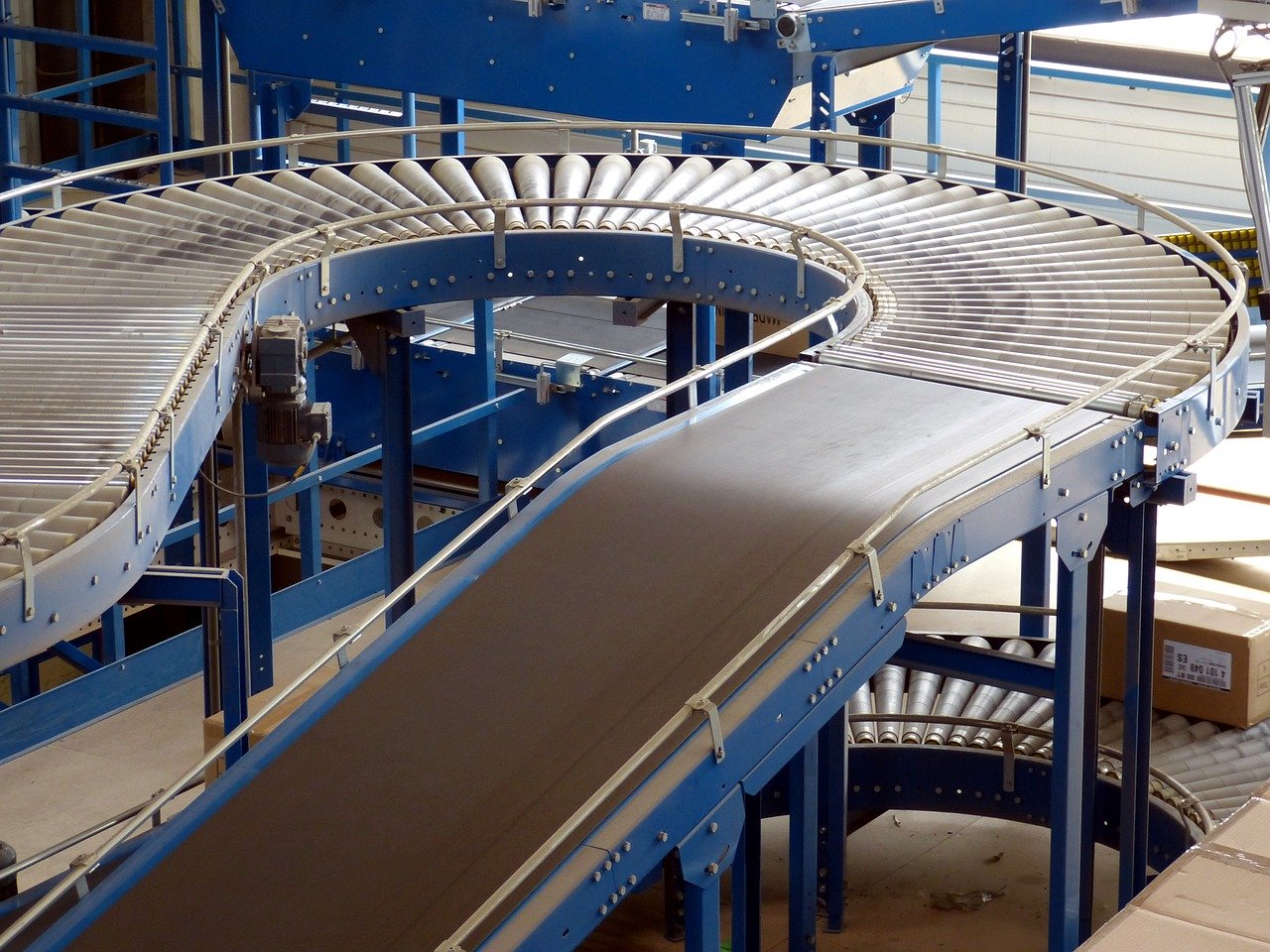Manufacturers have the need to protect assets at an ever increasing rate as cybercrime and tariff wars are on the rise, the talent pool is shrinking, and there is no greater opportunity than now for manufacturing business owners to protect their assets from the uncertain future, both personal assets and those of your business.
Let’s examine the risks manufacturers are facing and how asset protection can help you through these uncertain times.
RISKS FACING MANUFACTURERS
Enterprise Risk
Perhaps no other industry is as susceptible to enterprise risk as manufacturers.
When you think about enterprise risk, think about risks outside of your control that will affect your company’s profits. When you drive through a town and see that abandoned dilapidated factory, that is a manifestation of enterprise risk. Many entrepreneurs have had a thriving manufacturing business suddenly become nonexistent.
Often times, the owner didn’t even see it coming – they were preoccupied with making the products, and just didn’t have time to stop and consider all the changes occurring around them. Manufacturing, more than any other industry, can be effected by outside factors, factors that have nothing to do with the day-to-day process of making the products.
Some enterprise risk is easy to spot.
For instance, whitewater rafting companies require their customers to sign injury waivers because they know there is a risk of getting hurt if the raft capsizes. As another example, welders wear face shields to protect their eyes from heat, optical radiation, sparks and debris.
Not all enterprise risk, however, is as easy to spot. Here are three types of enterprise risk that manufacturers should be aware of:
-
Risk of Cybercrime – More Real Than You Think
As applications and software have become more prolific in the modern day, the number of connections to the outside world via the internet has increased exponentially. Each of these connection points is a vulnerability for your organization – potential entry points for a hacker.
The biggest data breaches of the 21st century according to CSO include Adobe, eBay, Equifax, LinkedIn and Marriott. If these companies got hacked, so can yours.
According to Forbes, the typical company faces dozens of distinct cybersecurity risks so attention to this critical exposure area to risk is essential to asset protection for manufacturing companies no matter what product you create.
If you suffer a data breach, this will most likely lead to lost revenue, damage to your brand reputation, and loss of intellectual property.
Then there are the legal ramifications as cyber breaches often result in class-action lawsuits. In recent years, examples of breaches that affected consumers have led to tens of millions of dollars being paid out by lawsuits in settlements. The companies paying out include Target, Home Depot, and Neiman Marcus.
Tack on all the legal fees that go along with these settlement payouts, and businesses face a much higher costs than most prepare for, sadly.
-
Shrinking Talent Pool – Dominoes of Increased Risks
Deloitte and The Manufacturing Institute launched their fourth skills gap study to reevaluate their prior projections and move the conversation forward on today’s hiring environment and the future of manufacturing work. The results appear to highlight a widening gap between the jobs that need to be filled and the skilled talent pool capable of filling them.
The study reveals that the skills gap may leave an estimated 2.4 million positions unfilled between 2018 and 2028, with a potential economic impact of 2.5 trillion. Further, the study shows that the positions relating to digital talent, skilled production, and operational managers may be three times as difficult to fill in the next three years.
An inadequate labor force leads to other enterprise risks. One such risk is workplace safety. Without enough workers in place, companies will be forced to employ less qualified, skilled and experienced workers which will then lead to more risk of workplace injuries.
Another such risk will be delays in production, which could lead to contract breaches and reduced sales, and increased product defects which could lead to increased product returns, breach of contract/warranty claims and even injury claims.
-
Supply Chain – Upstream and Downstream Risks
There are many conditions that can affect supply chain, one of which would be tariff wars.
If you are exporting or importing, this may have a direct effect on your business. But even if you are doing business only in the U.S., the tariff wars are likely to have an effect on your business as some of the materials you need will come from others who are directly affected by the tariff wars. Anything that effects your supplier will affect you and can have a significant impact on your cost for materials and ultimately, production.
Another supply chain risk is changes in international trade. Examples of these types of changes would be the U.S. threatening to pull out of NAFTA, the United Kingdom leaving the European Union, and the U.S. and China entering into a new trade agreement. While some will benefit from each of these changes, others will not.
A third supply chain risk worth mentioning is changes to the economy. An overall recession or economic boom can influence the availability and price of materials, consumers’ buyer behavior, price sensitivity, and more.
Product Defect and Warranty Claims Against Your Company
This is perhaps the most expensive type of claim for a manufacturer. If there is defect in a product, it may very well be that it’s in all of the products made during a certain period of time.
If your warranties are not carefully drafted and unambiguous, you could be sued for not just the cost of the products, but for the consequential damages suffered by the end users.
Let me share a story. This is exactly what happened when we were asked to help a certain manufacturer who sold $300k worth of product to a billion-dollar company.
The billion-dollar company used the product as a material in a larger product, claimed that our client’s product was defective, and that the cost to replace all of the end-products was $15 million. Unfortunately, our client’s warranties were not clear – different versions of the warranty were included in the sales documents, the purchase orders, and the invoices, and yet a different version appeared on our client’s website.
Without being able to point to a definitive warranty, the case persisted for many years, with 6 parties ultimately involved in litigation that took place in 2 different states. The legal fees were in the millions of dollars and there was uncertainty for everyone – a business owner’s worst nightmare.
Luckily, for our client, my extraordinary team at Sollertis was able to persuade their insurance carrier to cover both the attorney fees and the settlement so their out-of-pocket expenses were minimized. But it does not always turn out this well so if you find yourself in this situation, it would be much less stressful if you knew you had your assets protected.
Risk of Employment Claims
If you have a large labor force, this may be the risk that you encounter most frequently. There are so very many laws and regulations to protect employees, both at the federal and state level, and it’s extremely hard for even the most conscientious and fair employer to comply with all of them when guided by their own direction.
The riskiest type of claim you could face is the wage and hour claim which often can turn into a class action claim. Those are the big ones.
The claim is based upon an employee not getting his or her meal and rest breaks, and may include failure to pay the correct amount of overtime. Let’s do the math. You have 100 employees and one of them claims you did not comply with the law with respect to meal and rest breaks, or overtime.
Therefore, every employee is owed $30 extra per work day multiplied by 260 working days per year, multiplied by 4 years, and before you know it you have $3.1 million in damages.
But that’s not all.
When they add in penalties and attorney fees, you suddenly are facing a $4 to 5 million claim. If you have 200 employees, double this number. 300 employees, triple it.
It takes just one disgruntled employee to start this process. You can be in business for many years with no problems, but then you get that one letter demanding what you consider to be an exorbitant amount from a former disgruntled employee who fairly and rightfully deserved to be terminated. You did nothing wrong, so you reject the ridiculous demand.
Next thing you know her attorney has filed a class action lawsuit against your company and possibly named you individually as a defendant in the lawsuit. You might have employment practices liability insurance (EPLI), but your manufactures employment practices liability policy does not cover this type of claim.
You might enjoy smooth sailing for a long time and then one of these devastating risks could materialize, causing financial devastation to your business and personal affairs.
I hope this never happens to you, but why take this much risk?
Why grow your wealth for years and years through your blood, sweat and tears only to have it all sitting there as a potential target?
Why not protect your assets?
Even if you and your business does encounter these unfortunate circumstances, all will not be lost by putting in place an asset protection plan before things take a turn for the worst. Read on to learn how you can protect your assets from these threats.
ASSET PROTECTION FOR MANUFACTURERS
All asset protection is going to start with a review of your business practices, your existing entities and trusts, an inventory of all of your assets and liabilities, learning about the trusted advisors who are already on your team (CPAs, financial advisors, insurance brokers, attorneys, etc.), and understanding your family situation (spouse/children), retirement plans and dreams, and risk tolerance. During this discovery and planning phase we will use what we learn to develop your personal Master Asset Protection Plan®, which is a comprehensive plan for the protection and growth of your wealth. For all clients this plan will include one or more asset protection trust, limited partnership and limited liability company, with particular attention spent determining the best jurisdictions in which to create these asset protection tools.
Asset protection is very unique to each person, but there are some similarities between members of certain industries. For instance, shipping companies have very similar risks that they face as do manufacturing companies, surgeons, construction contractors, and so many others.
With that said, let’s take a look at asset protection for manufacturers.
There are four basic tools that we typically deploy to protect manufacturers from the risks they face. These tools include building the wall, separating the intellectual property and other business assets, risk assessment, and retirement planning. Let’s take a look at each of these.
Build The Wall
This really is quite simple in concept. Your manufacturing business generates profits. You take the profits out of your business and you invest them. These investments typically include a residence, investment real property, equities and bonds, and other business investments.
We will refer to these investments as your Investment Assets. We want to build a wall between your manufacturing business, the front where you face the most exposure to risk, and your Investment Assets.
To do this, we use asset protection trusts and entities. With the wall in place, your Investment Assets are protected from the creditors of your manufacturing business.
Separate Intellectual Property and Other Business Assets
Often times, the most valuable asset of a manufacturing business will be your intellectual property which typically consists of patents and trademarks. Other valuable Business Assets may include a business real property that you own, for example, the manufacturing plant or factory where you conduct your business.
We want to LEGALLY separate these valuable Business Assets from the operation of your manufacturing business – they will still be used by your business but not a LEGAL part of your business.
Ideally, your IP would be owned and registered to a separate limited liability company (LLC). That LLC will then license that IP to your manufacturing business to use and in exchange for this use, your manufacturing business will pay a royalty to the LLC.
By structuring the ownership of your IP in this fashion, we have removed it as an asset of your manufacturing business and therefore, the creditors of your manufacturing business cannot take your IP from you.
And who owns this new LLC? You guessed it – a trust or entity that you own that is ON THE OTHER SIDE OF THE WALL!
Separating your IP from your business is a really great tool if you also license other companies to use your IP. That revenue stream from the royalties paid to you by those other companies is now going directly into your LLC on the OTHER SIDE OF THE WALL and protected from any creditors of your manufacturing business.
If you own a manufacturing plant or factory, or other real estate that is used in your business, we would implement the same type of structure. We would put the real estate in a separate LLC that would then lease that real estate to your manufacturing business in exchange for rent that would be paid by your manufacturing business to the LLC.
Again, who would own this new LLC? You guessed it again – a trust or entity that you own that is ON THE OTHER SIDE of your ASSET PROTECTION WALL!
We would want to implement this same strategy for any other valuable Business Assets used in your manufacturing business such as vehicles or equipment, with the end result being that they are no longer assets within your business and therefore, assets cannot be taken by your creditors in the event any of the above risks we discussed were to occur.
Another great benefit from separating Business Assets from your business is that your CPA will have more tools available to reduce your income tax.
Risk Assessment
While each of the above tools is meant to minimize the loss should a large claim arise, we also want to get inside your business and asses the risks and take preventive action to minimize the likelihood of any risk materializing as a claim.
First, we will want to address any enterprise risks and take the necessary steps to address them. Often times, this will be the low hanging fruit. For instance, minimizing the cyber security risk may be as simple as engaging a cyber security consultant to review your practices and make recommendations for corrective measures which your business will simply need to implement.
Next, we will for sure want to look at your sales presentations, purchase orders, invoices and contracts and help you implement a rock solid warranty that is consistently stated in all places and which will give you leverage in the event of a product defect or warranty claim. Of course, we cannot guarantee that a court will enforce your warranty or decide a future case in your favor, but at the very least we will give your lawyers a solid defense to assert on your behalf in any litigation which develops.
Finally, we want to review your employment practices, policies and contracts and help you tighten them up so we can minimize the risk of labor law claims. We may also be able to limit the right of your employees to form a class action by including arbitration provisions in their contracts.
Retirement Planning
The State of California has certain assets that it has mandated are exempt from attachment by your creditors and when we use these exemptions to protect our clients’ assets we refer to this as exemption planning.
The most common type of asset that we use for exemption planning is retirement plans. You may already have a retirement plan in place for you and your employees, but it will probably be too expensive to use this plan to protect your assets.
What you probably do not know is that you can create a private retirement plan under CA law that does not require employee participation.
With a private retirement plan you can protect much more of your wealth, but the rules are complex and there are certainly situations in which retirement plans will not protect your assets. As a matter of fact, a recent case was just handed down last year stating a doctor’s private retirement plan assets were ruled to be not fully protected from his creditors because of mistakes he made along the way. So, it’s important that you have your plan created by trustworthy legal counsel to ensure it will protect all your assets as intended.
NOW YOU KNOW
Manufacturing company owners have many asset protection tools at their disposal. But remember, asset protection is just like insurance, it doesn’t work unless you have it in place BEFORE THE CLAIM.
So, don’t procrastinate. If you wait until one of your executives is telling you the bad news about a huge threat to your business that has just occurred, it’s too late.
Take action to implement an asset protection strategy today. Contact Sollertis, we are dedicated to helping you protect your assets.
More at Sollertis.com
This material has been prepared by Sollertis for informational purposes only and nothing herein is intended as legal advice for any particular or individual situation. You should not rely upon any information herein as a source of legal advice, and receipt of any such information does not create an attorney-client relationship between you and Sollertis. Viewers and readers should not act upon this information without seeking professional legal counsel. Prior results do not guarantee a similar outcome.






